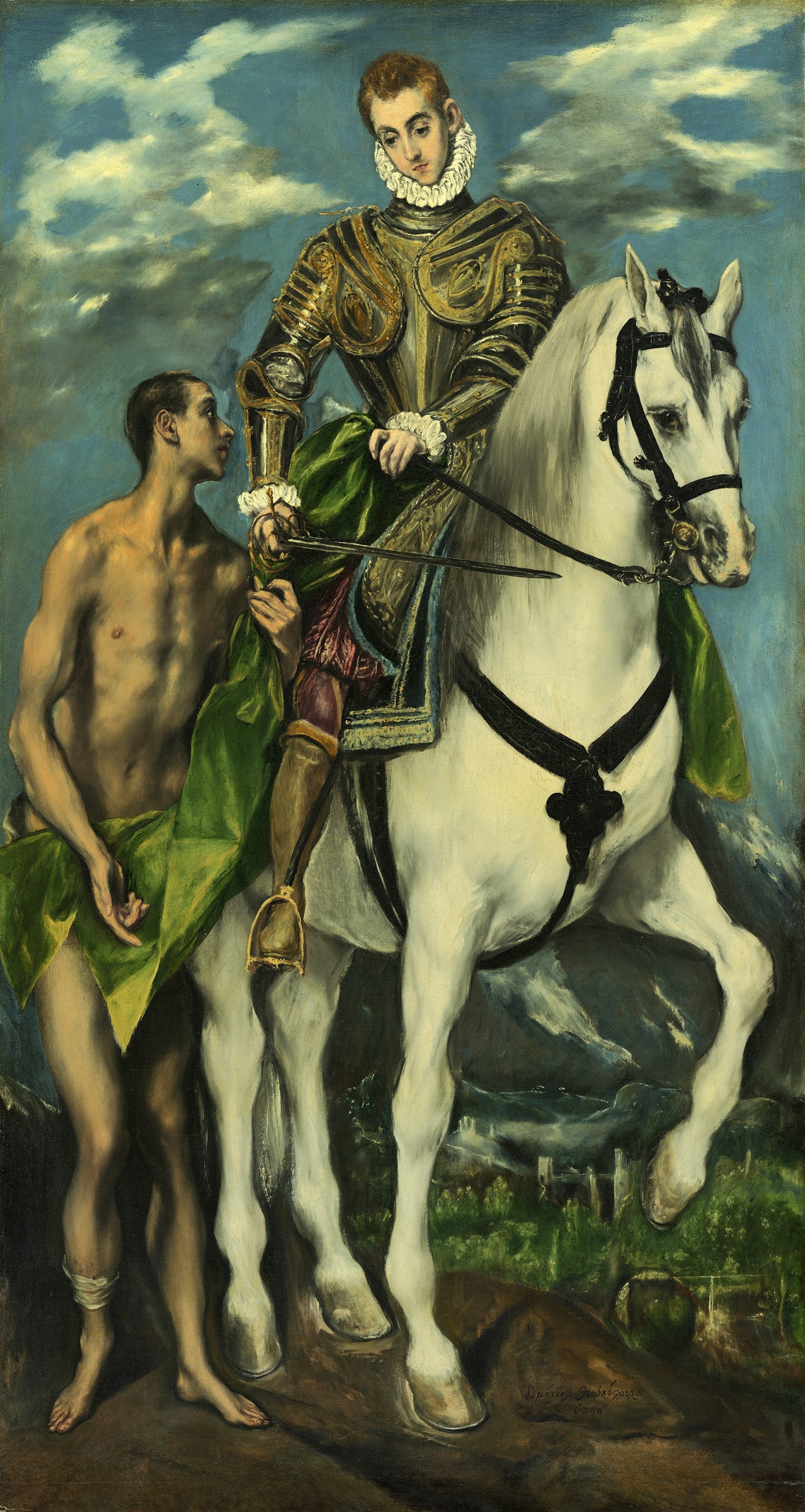Some argued the leaders of the Impressionist movement were short-sighted, for instance, and that their blurry distance vision when not using spectacles may explain their broad, impetuous style.

Architect, painter and sculptor of the Spanish Renaissance, El Greco (1541-1614) is known for vertically elongating certain figures in his paintings. In 1913, ophthalmologist Germán Beritens argued this elongation was due to astigmatism



Edgar Degas, who lived from 1834 to 1917, experienced progressive visual loss in the last 30 years of his life. In 2006 ophthalmologist Michael F. Marmor used information from Degas's correspondence and computational simulations of the painter's perception in an attempt to diagnose Degas and better understand how the artist would have experienced the world.
Marmor concluded that Degas's central vision, where acuity is sharpest, weakened in his later years. Many aspects of Degas's art, such as the shading, color and overall composition of his paintings, were remarkably robust to his visual loss, however. As his central vision grew blurry, his paintings became coarser and lost refinement. Yet Degas himself might not have noticed a fundamental difference between his earlier work and later paintings, such as this depiction of ballerinas from his later years. This is because he would have been equally unable to focus his central vision on the older paintings. Marmor suspects that Degas's later works looked smoother and more natural to the painter (filtered through his own visual pathology) than to viewers with healthy eyes

In 2004 neuroscientists Margaret S. Livingstone and Bevil R. Conway, both then at Harvard Medical School, observed that 17th-century Dutch painter Rembrandt van Rijn's eyes were often misaligned in his self-portraits, so that one eye appeared to look directly at the viewer, whereas the other eye looked off to the side. Livingstone and Conway wondered whether Rembrandt had painted himself with ruthless accuracy, which would suggest that the painter was actually walleyed. They measured aspects of Rembrandt's gaze in 36 self-portraits and found that if these paintings were true to life, Rembrandt did not have normal stereovision. In short, he would have struggled to see depth with stereoscopic cues.
Rembrandt's poor stereovision seems to be very helpful in his artwork. Art students routinely learn to close one eye to replicate the three-dimensional world onto a flat medium with greater accuracy. Stereo blindness, or the inability to use the horizontal shift between our eyes to see in 3-D, can therefore aid artists in rendering the world in two dimensions.

Architect, painter and sculptor of the Spanish Renaissance, El Greco (1541-1614) is known for vertically elongating certain figures in his paintings. In 1913, ophthalmologist Germán Beritens argued this elongation was due to astigmatism

Claude Monet was diagnosed with cataracts in 1912, and recommended to undergo surgery. He refused. Over the subsequent decade, his ability to see critical detail reduced, as is documented in his medical records. Importantly, his color vision also suffered. In 1914, he noted how reds appeared dull and muddy, and by 1918 he was reduced to selecting colors from the label on the paint tube.
The visual impact of his cataracts is demonstrated in two paintings of the same scene: the Japanese footbridge over his garden’s lily pond. The first, painted ten years prior to his cataract diagnosis, is full of detail and subtle use of color.In contrast, the second – painted the year prior to his eventually relenting to surgery – shows colors to be dark with a near absence of blue, and a dramatic reduction in the level of painted detail.


Edgar Degas, who lived from 1834 to 1917, experienced progressive visual loss in the last 30 years of his life. In 2006 ophthalmologist Michael F. Marmor used information from Degas's correspondence and computational simulations of the painter's perception in an attempt to diagnose Degas and better understand how the artist would have experienced the world.
Marmor concluded that Degas's central vision, where acuity is sharpest, weakened in his later years. Many aspects of Degas's art, such as the shading, color and overall composition of his paintings, were remarkably robust to his visual loss, however. As his central vision grew blurry, his paintings became coarser and lost refinement. Yet Degas himself might not have noticed a fundamental difference between his earlier work and later paintings, such as this depiction of ballerinas from his later years. This is because he would have been equally unable to focus his central vision on the older paintings. Marmor suspects that Degas's later works looked smoother and more natural to the painter (filtered through his own visual pathology) than to viewers with healthy eyes
In 2004 neuroscientists Margaret S. Livingstone and Bevil R. Conway, both then at Harvard Medical School, observed that 17th-century Dutch painter Rembrandt van Rijn's eyes were often misaligned in his self-portraits, so that one eye appeared to look directly at the viewer, whereas the other eye looked off to the side. Livingstone and Conway wondered whether Rembrandt had painted himself with ruthless accuracy, which would suggest that the painter was actually walleyed. They measured aspects of Rembrandt's gaze in 36 self-portraits and found that if these paintings were true to life, Rembrandt did not have normal stereovision. In short, he would have struggled to see depth with stereoscopic cues.
Rembrandt's poor stereovision seems to be very helpful in his artwork. Art students routinely learn to close one eye to replicate the three-dimensional world onto a flat medium with greater accuracy. Stereo blindness, or the inability to use the horizontal shift between our eyes to see in 3-D, can therefore aid artists in rendering the world in two dimensions.

No comments:
Post a Comment